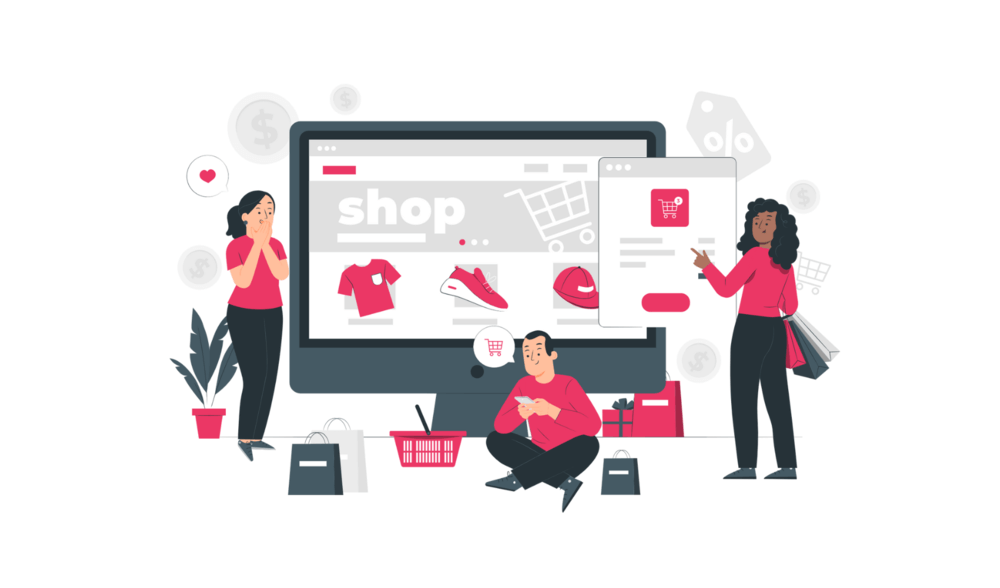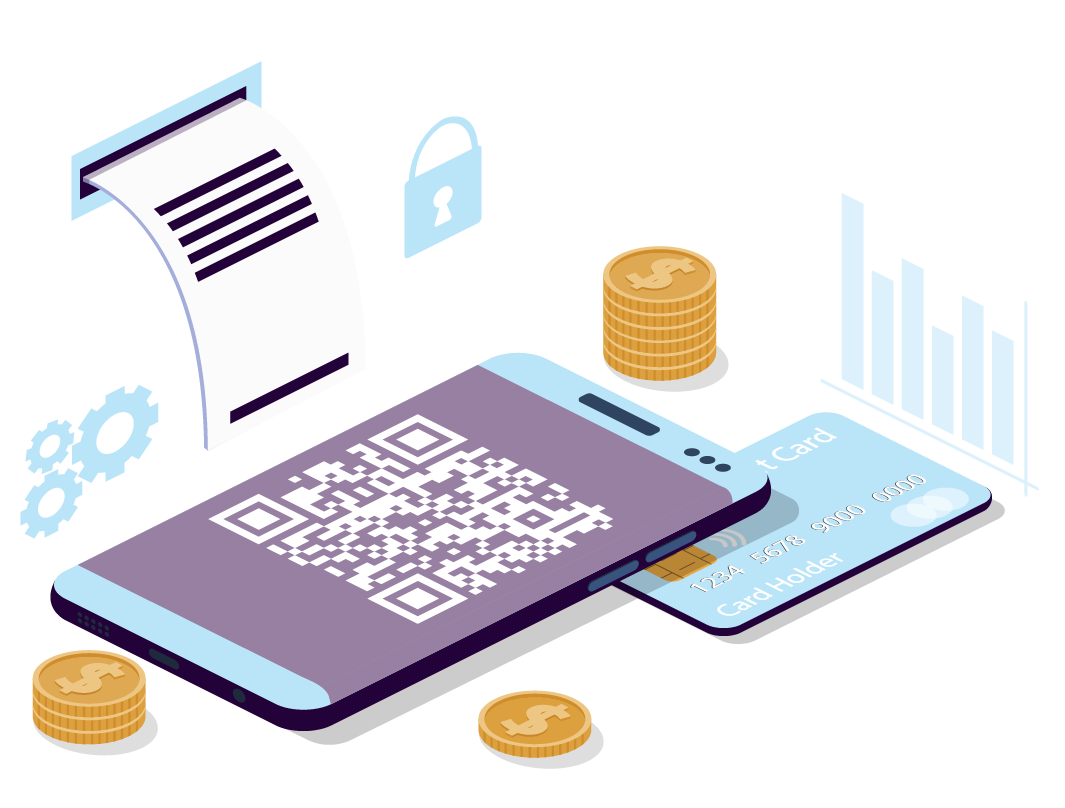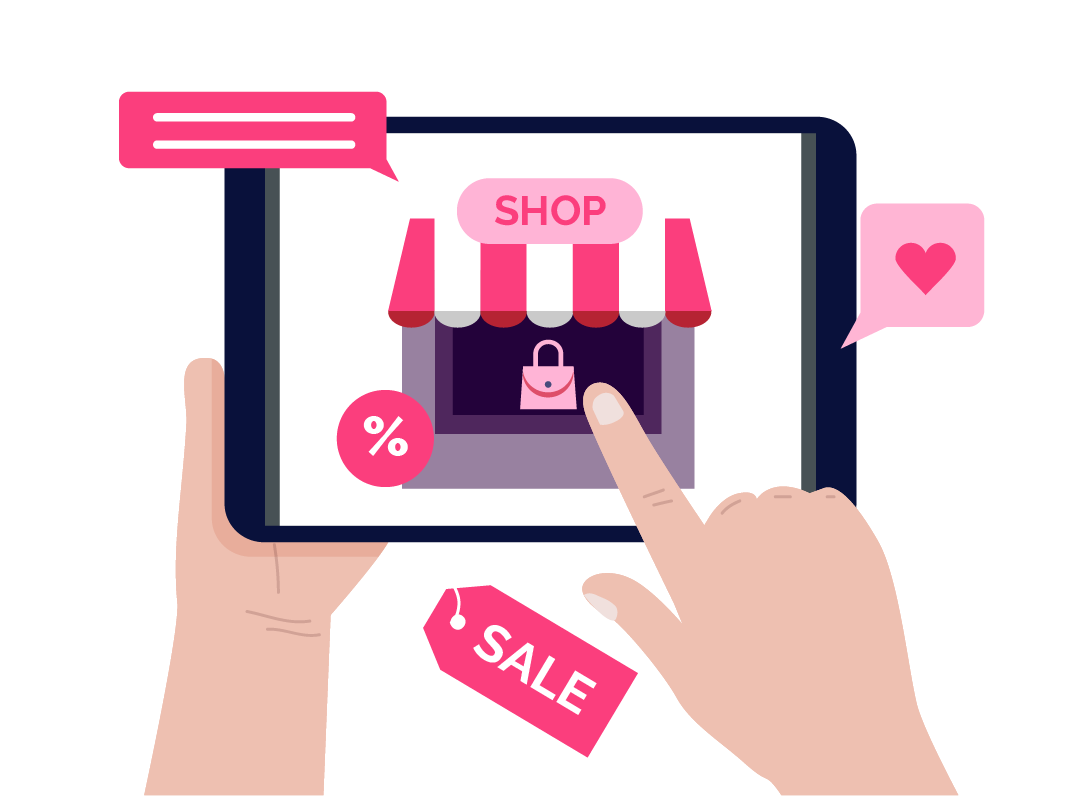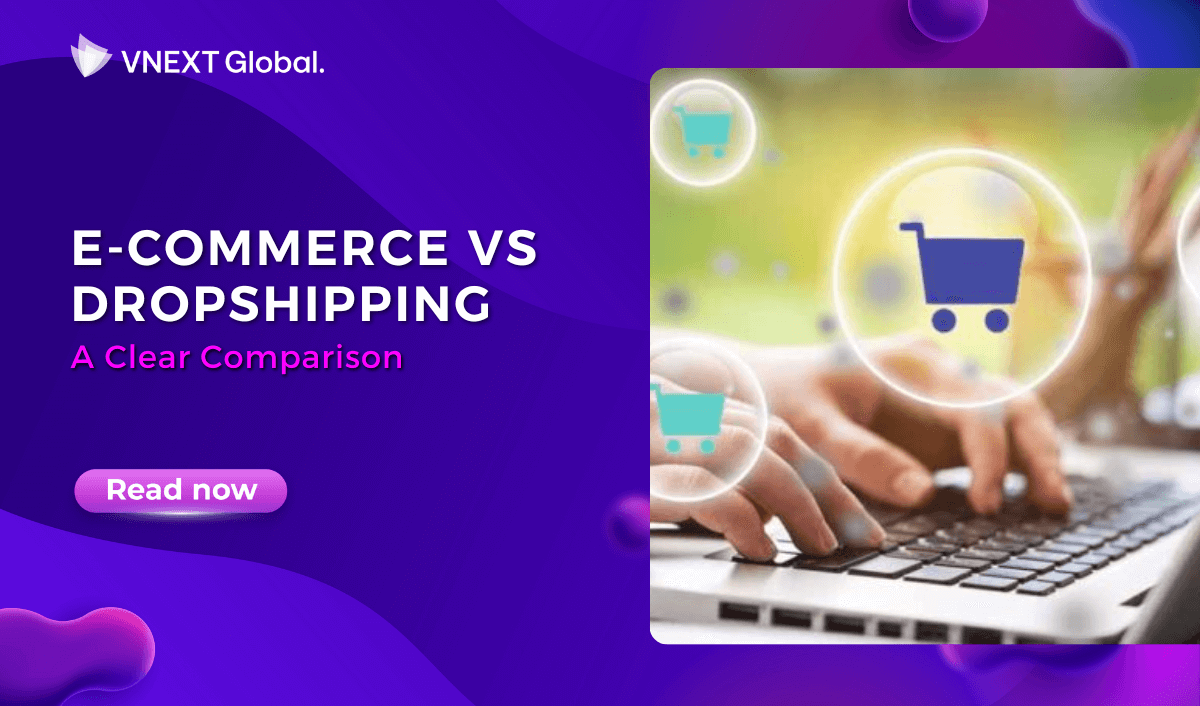E-commerce vs Dropshipping: A Clear Comparison
Online businesses have transformed the way we shop in today's digital age. E-commerce and dropshipping are two popular business strategies that have received a lot of attention recently. Both models provide entrepreneurs with distinct options to begin and build their enterprises in the internet economy. In this post, we will examine the fundamentals of e-commerce and dropshipping, evaluate their similarities and differences, and assist you in determining which model is most suited for your business.
1. The Basis of E-commerce - How Does It Work?
E-commerce, short for electronic commerce, refers to the buying and selling of goods and services over the internet. It involves the entire process of online shopping, from browsing products, adding them to the cart, making a payment, and receiving the purchased items. E-commerce can take various forms, such as business-to-consumer (B2C), business-to-business (B2B), consumer-to-consumer (C2C), and consumer-to-business (C2B).
In the traditional e-commerce model, businesses maintain inventory and warehouses to store products. When a customer places an order, the products are shipped directly from the company's inventory. This requires significant upfront investment in inventory management, warehousing, and shipping infrastructure. However, with the advent of modern e-commerce platforms like Shopify, businesses can also utilize dropshipping to streamline their operations.

2. The Basis of Dropshipping - How Does It Work?
Dropshipping is a fulfillment model that enables online retailers to sell products without needing to keep inventory or handle the shipping process. Instead, when a store owner receives an order, they simply purchase the product from a third-party supplier who then ships it directly to the customer. The key distinction between dropshipping and traditional e-commerce is that the store owner does not physically handle the products.
The dropshipping process typically involves the following steps:
a. Setting up an online store:
Store owners create a website or use an e-commerce platform like Shopify to establish their online presence.
b. Sourcing products:
Store owners identify reliable suppliers who offer dropshipping services for the products they wish to sell. These suppliers may be manufacturers, wholesalers, or distributors.
c. Listing products:
Store owners import the product listings from the suppliers' inventory to their online store. They can customize product descriptions, set prices, and manage inventory information.
d. Receiving orders:
When a customer places an order on the online store, the store owner receives the order details and payment.
e. Notifying the supplier:
The store owner forwards the order details to the supplier, including the customer's shipping address and payment.
f. Shipping the product:
The supplier packages and ships the product directly to the customer. The store owner may have limited control over the shipping process and delivery times.
g. Customer support:
The store owner remains responsible for handling customer inquiries, addressing concerns, and managing returns or refunds.

3. E-commerce vs Dropshipping - A Clear Comparison: Similarities vs Differences
a. Similarities:
i. Online Presence:
Both e-commerce and dropshipping operate in the online marketplace, utilizing websites or e-commerce platforms to reach customers globally.
ii. Revenue Generation:
Both models allow businesses to generate revenue by selling products and services online.
iii. Customer Acquisition:
Both e-commerce and dropshipping require effective marketing strategies to drive traffic and convert visitors into customers.
iv. Customer Support:
Regardless of the model, businesses need to provide efficient customer support to address inquiries, resolve issues, and maintain customer satisfaction.
b. Differences:
i. Inventory Management:
In traditional e-commerce, businesses maintain their inventory, which requires upfront investment, storage space, and inventory management. In dropshipping, the supplier handles the inventory and shipping, eliminating the need for businesses to hold stock.
ii. Fulfillment and Shipping:
E-commerce businesses are responsible for packaging and shipping the products to customers, while dropshipping businesses rely on suppliers to handle these tasks.
iii. Control over Product Quality and Branding:
E-commerce businesses have more control over product quality, packaging, and branding since they physically handle the products. Dropshipping businesses are more dependent on suppliers and may have limited control over these aspects.
iv. Profit Margins:
E-commerce businesses that maintain their inventory can potentially enjoy higher profit margins by buying products at wholesale prices and selling them at retail prices. Dropshipping businesses typically have lower profit margins as they pay the wholesale price to suppliers, who may offer less competitive prices compared to bulk purchases.
v. Scalability:
Dropshipping offers greater scalability as businesses can expand their product offerings without the need for additional storage space or inventory management. E-commerce businesses, on the other hand, may face challenges when scaling due to increased operational complexity and infrastructure requirements.

4. Which Model Should Your Business Follow?
Determining which model is best for your business depends on various factors, including your budget, resources, and long-term goals. Here are some considerations to help you make an informed decision:
a. Budget:
If you have limited upfront capital and want to minimize financial risk, dropshipping can be an attractive option. You can start an online store with minimal investment since you won't need to purchase inventory upfront.
b. Control and Branding:
If maintaining control over product quality, packaging, and branding is crucial for your business, traditional e-commerce may be a better fit. By managing your inventory, you have more flexibility to tailor the customer experience to your brand standards.
c. Profit Margins:
If you prioritize higher profit margins and have the resources to invest in inventory and warehousing, e-commerce can offer more profitability in the long run. By buying products at wholesale prices and selling them at retail prices, you can capture a larger portion of the revenue.
d. Scalability:
If you envision scaling your business rapidly and expanding your product offerings, dropshipping provides greater flexibility and scalability. Without the constraints of inventory management, you can add new products to your store without significant upfront investment.

Final Thoughts:
In summary, both e-commerce and dropshipping offer unique advantages and suit different business needs. E-commerce allows for greater control over inventory, quality, and branding but requires upfront investment and operational complexity. Dropshipping offers lower entry barriers, minimal upfront investment, and scalability, but may have lower profit margins and limited control over the fulfillment process. Consider your budget, resources, and long-term goals to determine which model aligns best with your business. Remember, successful implementation of either model requires effective marketing, customer support, and a thorough understanding of your target audience.
If you are looking for a trusted IT partner, VNEXT Global is the ideal choice. With 14+ years of experience, we surely can help you to optimize your business digitalization within a small budget and short time. Currently, we have 400+ IT consultants and developers in Mobile App, Web App, System Development, Blockchain Development and Testing Services. We have provided solutions to 600+ projects in several industries for clients worldwide. We are willing to become a companion on your way to success. Please tell us when is convenient for you to have an online meeting to discuss this further. Have a nice day!












